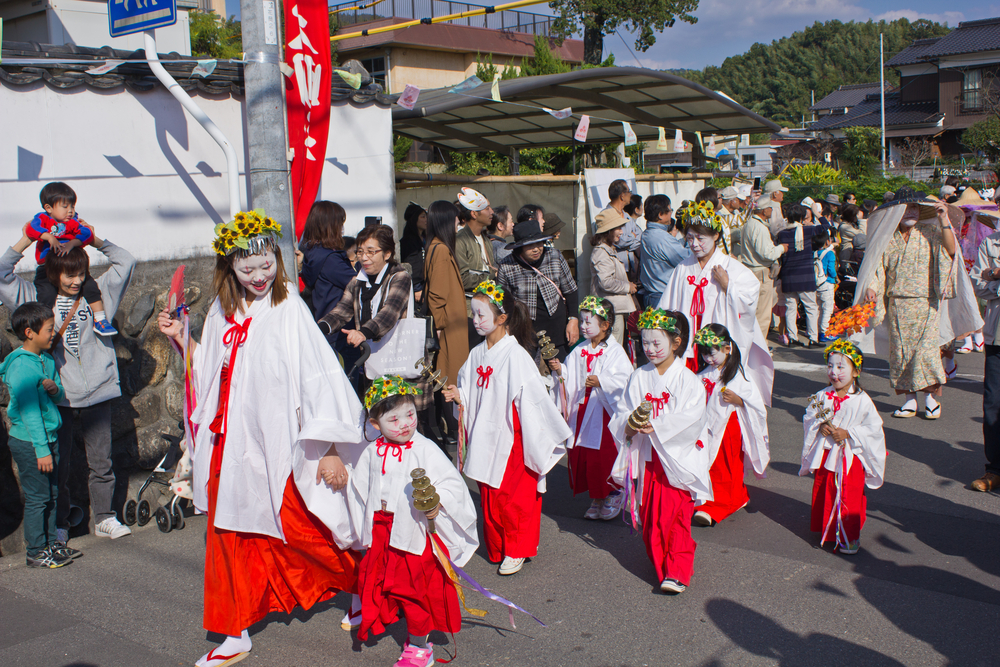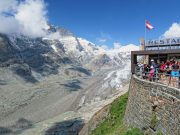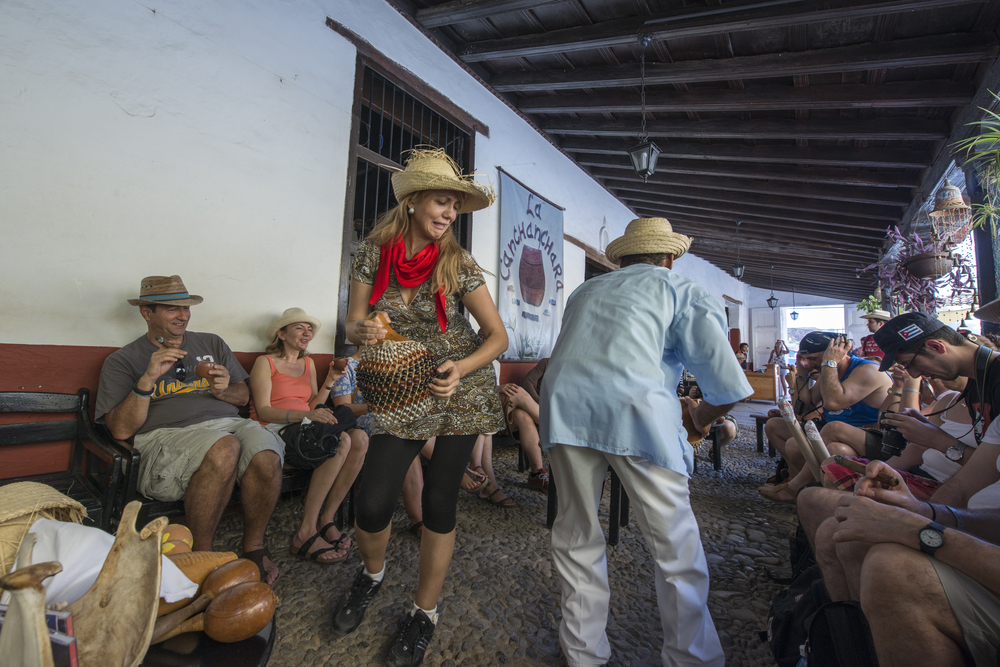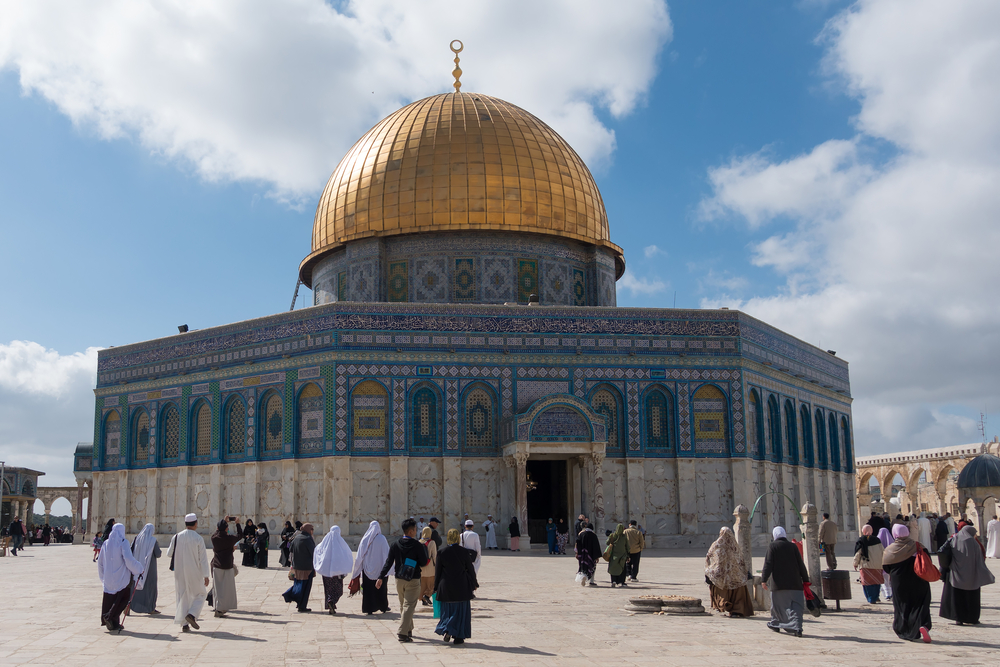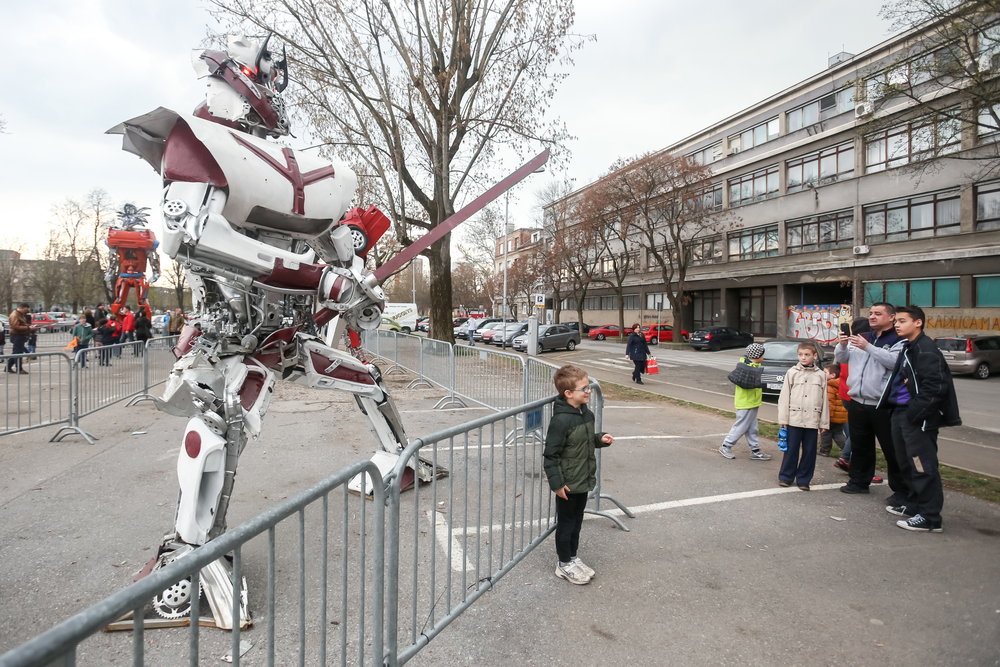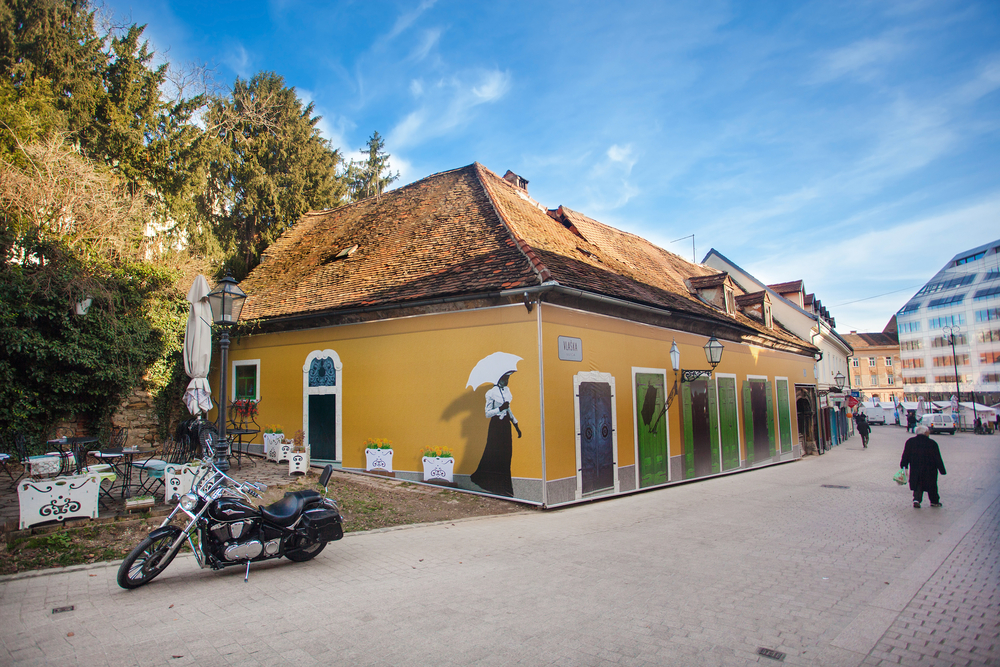Getting started as two ancient fortress towns overtaking the Sava River, Zagreb was revitalized as business center during the Baroque period, thanks to its location along the connection between Adriatic Sea and Central Europe. The city is the hub for Croatia’s modern culture, academics, sports and art while preserving its rich history. The characteristic blend of ancient palaces, open markets, old cathedrals and medieval towers help shape Zagreb as the ideal city for travelers.
Zagreb, Croatia – July 15, 2015: Monument of the Croatian King Tomislav in Zagreb, Croatia. (Ververidis Vasilis / Shutterstock)
ZAGREB, CROATIA – AUGUST 26, 2015: Water fountain with Holy Mary column in Zagreb, tourist resting near the fountain. (Dario Vuksanovic / Shutterstock)
ZAGREB, CROATIA – AUGUST 21: People walk along Ban Jelacic Square, the central square of the city on August 21, 2012 in Zagreb, Croatia. The oldest standing building here was built in 1827. (Sergiy Palamarchuk / Shutterstock)
ZAGREB, CROATIA – JUNE 2, 2012: Crowds of tourists and residents watching entertainers perform during 15th Cest is d’Best festival on main Ban Josip Jelacic square in Zagreb. (Deymos.HR / Shutterstock)
ZAGREB, CROATA – AUGUST 7, 2010: Young woman playing percussions on Ban Josip Jelacic square. (Ivica Drusany / Shutterstock)
Zagreb, Croatia, cultural associations in folk costumes. Ban Jelacic Square. Sing and play Croatian folk songs. Photographed, August 17th. 2014. (Milan Adzic / Shutterstock)
ZAGREB, CROATIA – MAY 09: Changing of the guard honorary Cravat Regiment on May 09, 2015 in Zagreb, Ban Jelacic Square. (Ivan Smuk / Shutterstock)
ZAGREB, CROATIA – MAY 31, 2014: Guard of Honour of the Cravat Regiment popular tourist attraction in Zagreb. (Ivica Drusany / Shutterstock)
ZAGREB, CROATIA – JULY 19: Members of folk group Kitka from Istibanja, Macedonia during the 49th International Folklore Festival in center of Zagreb, Croatia on July 19, 2015 (Zvonimir Atletic / Shutterstock)
ZAGREB, CROATIA – MAY 13, 2015: Tram coming from the Ban Jelacic Square to Jurisiceva street (Gordana Sermek / Shutterstock)
ZAGREB, CROATIA – MARCH 26, 2016 : Exhibition by Danilo Baletic (23) named Transformers protecting Zagreb on square Franje Tudjmana in Zagreb,Croatia. Exhibition is made of automobile parts and waste. (Photoman29 / Shutterstock)
ZAGREB, CROATIA – DECEMBER 24, 2014: Betlehem stable in front of Zagreb Cathedral. (Ivica Drusany / Shutterstock)
ZAGREB, CROATIA – DECEMBER 25, 2015: Woman petting donkey in Nativity scene in front of Cathedral as part of Christmas Market which won the title The best European Christmas Market. (Ivica Drusany / Shutterstock)
ZAGREB, CROATIA – DECEMBER 24, 2014: Renovation of old building in Vlaska street. (Ivica Drusany / Shutterstock)
ZAGREB, CROATIA – MAY 2, 2009: St. Mark’s Church. This 13th century church is one of Zagreb’s most emblematic buildings. (Ivica Drusany / Shutterstock)
ZAGREB, CROATIA – AUGUST 05, 2015: Tourist taking pictures at st. Mark’s square in Zagreb, Croatia (Dario Vuksanovic / Shutterstock)
ZAGREB, CROATIA – AUGUST 5, 2015: Asian tourist posing at Upper town in front of old doors. (Ivica Drusany / Shutterstock)
ZAGREB, CROATIA, JULY 28, 2015: Interior of Cathedral dedicated to Assumption of Mary and kings Saint Stephen and Ladislaus in Zagreb, Croatia. The building is 46 m wide and 108 m high. (pavel dudek / Shutterstock)
ZAGREB, CROATIA – AUGUST 26, 2015: Hop on, hop off bus in city of Zagreb, very popular with tourists (Dario Vuksanovic / Shutterstock)
ZAGREB, CROATIA – MARCH 21, 2015: The Zagreb funicular is one of many tourist attractions in Zagreb, Croatia. It is one of the shortest funiculars in the world; the length of the track is 66 meters. (Dario Vuksanovic / Shutterstock)
ZAGREB, CROATIA – JUN 2: Visitors during 15th Cest is d’Best festival around pavillion in Zrinjevac park on June 2, 2012 in Zagreb, Croatia. Zrinjevac is spread over 12540 sq meters in city center. (Deymos.HR / Shutterstock)
ZAGREB, CROATIA, JULY 28, 2015: street ivana racica in croatian capital zagreb is during sunny day in summer is overcrowded by locals and tourists having lunch in one of many surrounding restaurants. (pavel dudek / Shutterstock)
ZAGREB, CROATIA – 12 MARCH 2015: Dolac market full of fruits and vegetables with a view of Zagreb Cathedral. (paul prescott / Shutterstock)
ZAGREB, CROATIA – AUGUST 5, 2015: Tourist guide in costume talking to tourists at Upper town. (Ivica Drusany / Shutterstock)
ZAGREB, CROATIA – AUGUST 05, 2015: Tourist taking pictures with entertainers dressed as Manda and ban Jelacic at ban Jelacic square in Zagreb, croatia (Dario Vuksanovic / Shutterstock)
ZAGREB, CROATIA – JUNE 24, 2015: Scene of the cathedral, with locals and tourists, in Zagreb, Croatia (RnDmS / Shutterstock)
ZAGREB, CROATIA – APRIL 25, 2015: Zagreb gothiccathedral entrance (Dario Vuksanovic / Shutterstock)
ZAGREB, CROATIA – JULY 11, 2015: Asian tourist taking selfies in front of the Saint Mark’s Church at upper town. (Ivica Drusany / Shutterstock)
Zagreb, Croatia – December 11, 2015: Museum of contemporary art in Zagreb exterior slide exit view. Popular cultural destination of Zagreb. (xbrchx / Shutterstock)
ZAGREB, CROATIA, JULY 28, 2015: night view of the ilica street in croatian capital zagreb (pavel dudek / Shutterstock)
ZAGREB, CROATIA – DECEMBER 03, 2014: Night photo of Croatian National Theater, designed by Fellner & Helmer and built in 1895, it’s the oldest and central national theater institution. (Dario Vuksanovic / Shutterstock)
Zagreb, the Capital of Croatia
By Mario Ivic
The city of Zagreb is the capital of Croatia. It is located in the continental part of the country between Sava River and Medvednica Mountain.
The city of Zagreb is an important traffic hub because it is located in the centre of Europe. Important transport routes between Adriatic coast and Central Europe are merged here. It has a very good connection with other cities by air, road and by rail.
Zagreb is an old Central European city which has developed as cultural, scientific, commercial and economic centre.
It is a very comfortable place to live in. Zagreb has plenty of green parks and promenades. Also, there are plenty of places where you can go for a day trip near the city. It preserved its monuments and architecture during the history. The centre of the city consists of Gornji Grad, Kaptol and Donji Grad. The main square of the Gornji Grad is St. Mark Square. Buildings of the Croatian Parliament, Government and City Council are situated there. St. Mark’s Church is dominating the St. Mark Square.
Kaptol is the historical settlement which is located around the Zagreb Cathedral. The Cathedral is considered to be the largest building in Croatia. Dolac is placed between Gornji Grad and Kaptol. It is the most famous open-air market in Zagreb.
Donji Grad is a modern urban centre of Zagreb. The main and the biggest square called Ban Jelacic Square is located there. The square continues the longest street in the city which is called Ilica. A favorite gathering place in the city is the Cvjetni Square. Large number of people like to drink coffee on the Cvjetni Square. Square is named by the stalls of flowers that are placed there.
The favorite promenade is Maksimir. It is a historic park from the 18th century. A Zoo is located inside the Maksimir.
Residents of Zagreb like to spend their free time at Jarun and Bundek lakes. Also, Medvednica Mountain is a very popular resort. Sljeme is situated on the mountain. It has marked trails for skiing.
Mario works at AdriaticOnline as a writer, presenting the beauties of Croatia.
Article Source: http://EzineArticles.com/expert/Mario_Ivic/696539
http://EzineArticles.com/?Zagreb,-the-Capital-of-Croatia&id=5034237



